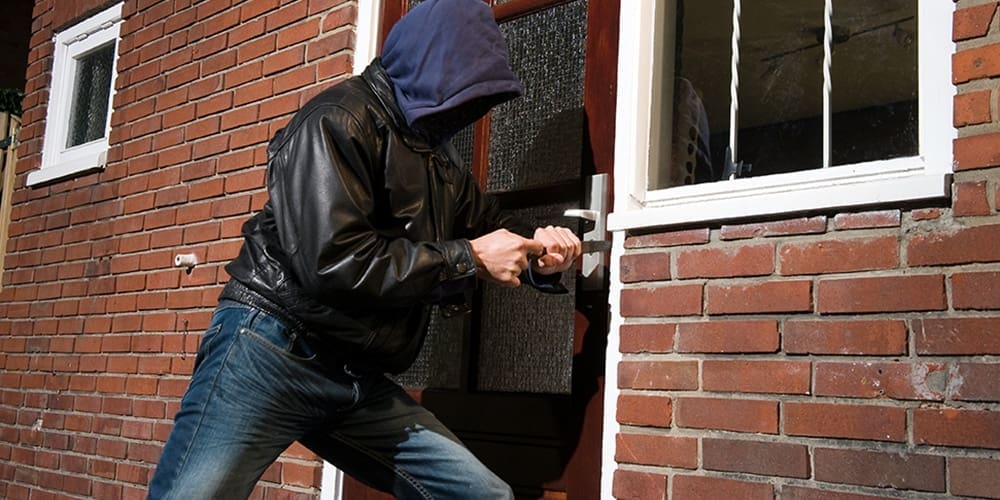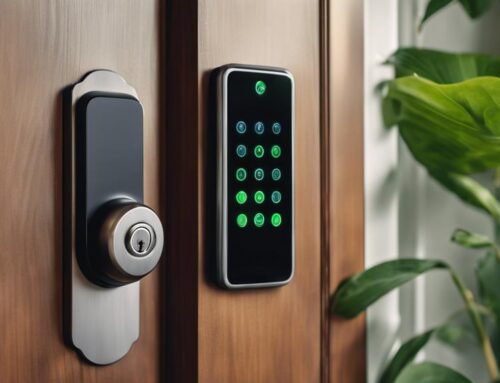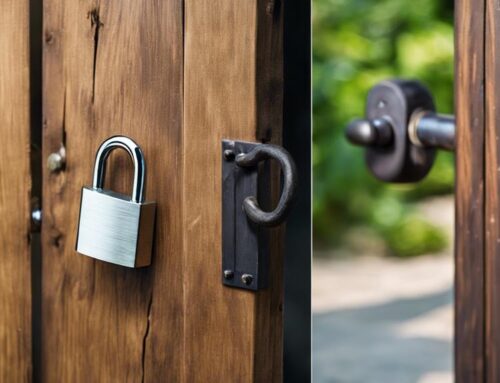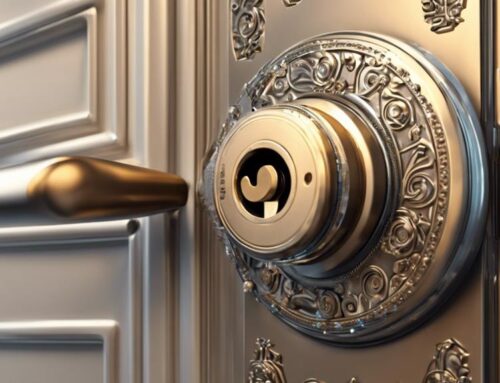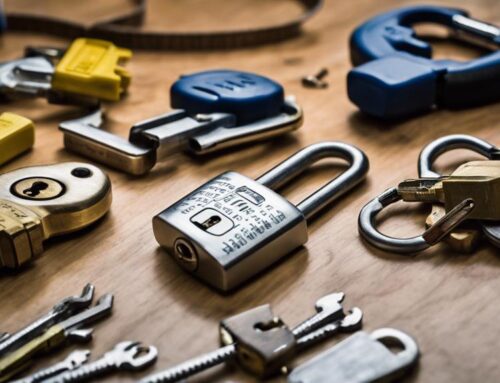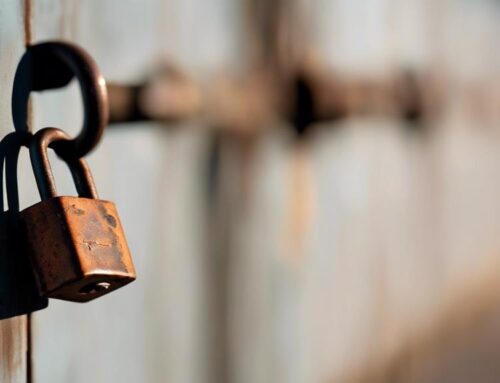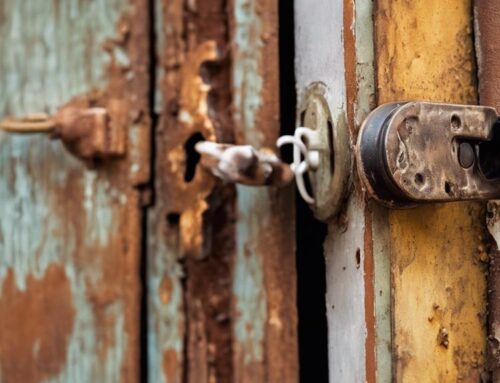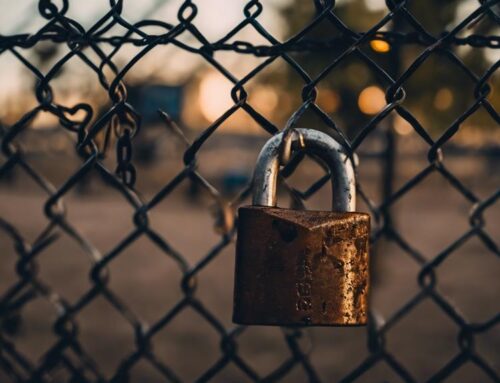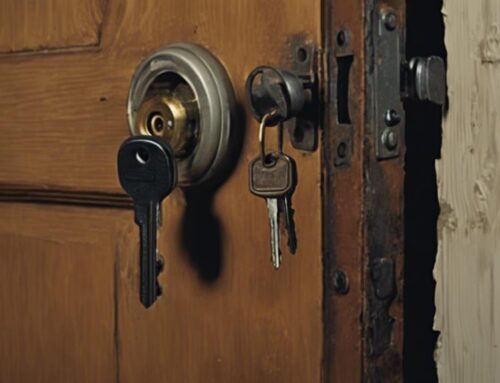Home break-ins occur alarmingly often, with a burglary transpiring every 30 seconds in the United States, amounting to around 2.5 million incidents annually. Securing your home is vital, especially since houses without security systems are 300% more likely to be targeted. Common entry points include front doors, first-floor windows, and garages. Burglars often strike during the day, between 10:00 am and 3:00 pm. Enhancing home security with robust locks, alarm systems, and strategic lighting can greatly deter intruders. Learn the essential steps to better protect your home and your loved ones.
Introduction
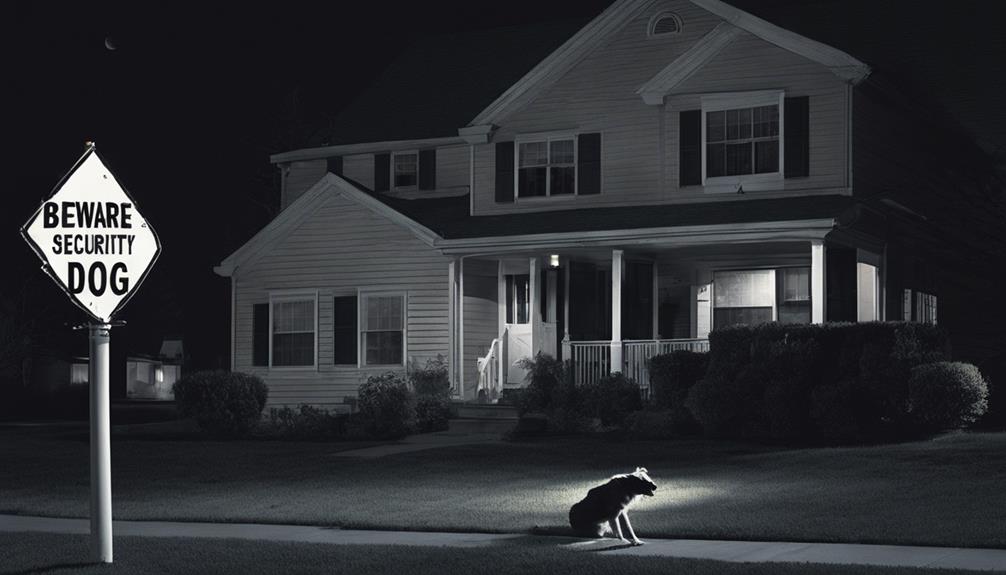
Home break-ins remain an important concern, with a burglary occurring every 30 seconds in the United States, amounting to approximately 2.5 million incidents annually. Understanding these alarming statistics is vital for homeowners seeking to bolster their security measures effectively. By analyzing the data on break-in patterns and vulnerabilities, we can develop strategies to enhance safety and reduce the risk of becoming a victim.
Brief overview of the prevalence of home break-ins
In the United States, the alarming frequency of home invasions—one occurring every 13 seconds—underscores the critical need for robust home security measures. Annually, more than 2 million incidents are reported, with a staggering 60% happening while residents are present. This highlights not only the emotional but also the financial toll, with an average loss of $2,000 per incident. Homes lacking security systems are 300% more likely to be targeted, making it imperative to invest in effective security solutions. Burglars commonly exploit vulnerable entry points such as front doors, first-floor windows, and garages. Understanding these statistics is essential for prioritizing security and safeguarding your home against potential threats.
Importance of understanding break-in statistics for improving home security
By delving into the statistics surrounding home break-ins, homeowners can gain crucial insights that enable them to fortify their residences against potential threats. Understanding these statistics allows for a thorough assessment of security vulnerabilities, revealing common entry points and peak times for break-ins. This knowledge can serve as a catalyst, motivating homeowners to invest in robust security measures. Armed with data on the frequency and nature of break-ins, homeowners can craft a tailored security plan, ensuring effective protection. Such awareness empowers individuals to make informed decisions, transforming their homes into safer havens. Embracing these insights is a proactive step toward achieving greater control over home security, ultimately fostering peace of mind.
The Reality of Home Break-Ins

Home break-ins are a remarkably common occurrence in the United States, with one happening every 30 seconds, totaling about 2.5 million annually. These intrusions mainly occur during daytime hours, revealing a strategic preference by burglars for when homes are likely to be unoccupied. Understanding the typical profile of a burglar, their preferred entry points, and the financial repercussions underscores the critical need for effective security measures.
General statistics on home break-ins in the United States
Additionally, prominently, every year, approximately 2.5 million burglaries plague the United States, with a break-in occurring every 30 seconds, underscoring the urgent need for improved home security measures. These alarming statistics reveal that 62% of burglaries occur during daytime hours between 9:00 a.m. and 3:00 p.m., when homes are often unoccupied. Financially, the average burglary costs victims around $2,799, highlighting the significant economic toll. June emerges as the peak month for burglaries, accounting for 11.3% of incidents. Prominently, 56% of burglars gain entry through the front or back door, emphasizing the critical necessity of securing primary entry points. By understanding these trends, homeowners can take proactive steps to fortify their homes against potential threats.
Common times and seasons when break-ins occur
Understanding the patterns and timing of burglaries is essential for homeowners aiming to enhance their security measures. Most break-ins occur between 10:00 am and 3:00 pm, capitalizing on the typical absence of residents. Contrary to popular belief, daytime hours are more prone to break-ins than nighttime. Summer months, particularly June, witness the highest incidence of home burglaries, likely due to increased vacation periods and open windows. By recognizing these high-risk periods, homeowners can implement targeted security strategies, such as installing smart surveillance systems and reinforcing entry points, to mitigate potential threats. This awareness allows for proactive measures, ensuring homes remain secure even during the most vulnerable times.
The typical profile of a burglar and their methods
The detailed profile of a burglar reveals a young male, often residing nearby, who employs simple tools and executes break-ins swiftly, underscoring the necessity for thorough, proactive security measures. Typically aged 18-24, these intruders favor daytime hours, striking between 9:00 a.m. and 3:00 p.m. The front door is their main entry point, using screwdrivers, pliers, and hammers for rapid access, spending less than 12 minutes inside. Targeting valuables primarily in the master bedroom, burglars exploit common vulnerabilities. Homeowners can mitigate risks through extensive security systems, fortified entry points, and active participation in neighborhood watch programs. These measures collectively form an effective deterrence, fostering a sense of control and security within residential communities.
Entry Points: How Burglars Gain Access
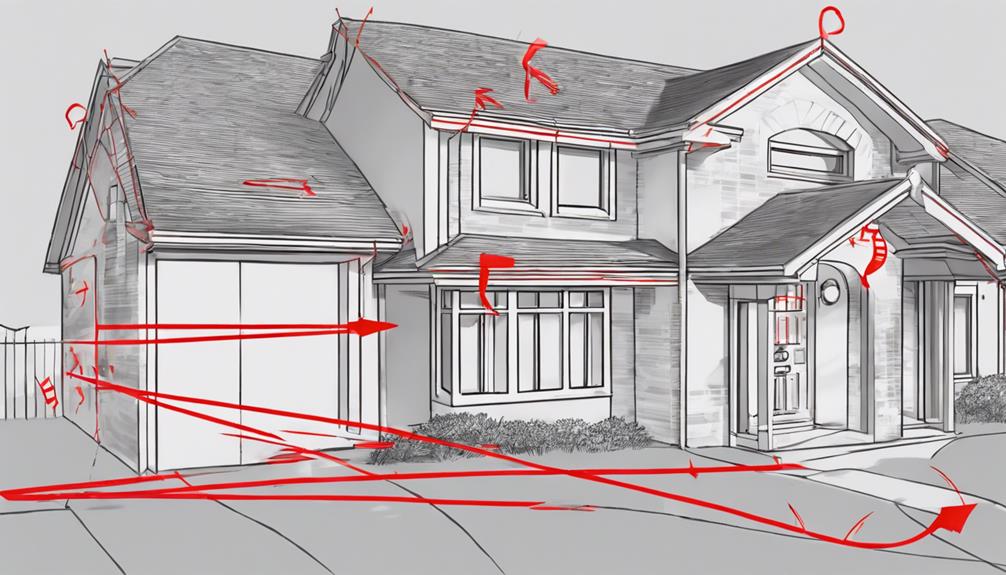
Understanding how burglars gain access to homes is essential for improving security measures. The front door, windows, back doors, and garage doors are common entry points, each with unique vulnerabilities that require specific strategies to fortify. Additionally, distinguishing between forced entry and exploiting unsecured doors or windows can help homeowners prioritize their protective efforts effectively.
Front doors: The most common entry point
Front door vulnerabilities present a significant security concern, with 34% of burglars choosing this entry point due to its ease of access and typically weaker defenses. To mitigate this risk, homeowners must prioritize robust front door security. Installing sturdy locks, such as deadbolts, and reinforcing door frames can greatly reduce susceptibility to break-ins. Additionally, keeping front doors locked at all times is a simple yet effective deterrent. For enhanced protection, consider integrating advanced security measures like smart locks, which offer remote control capabilities. Video doorbells and home automation systems further bolster safety by enabling real-time monitoring of front door activities. These proactive steps empower homeowners to take control and safeguard their properties against potential intruders.
Windows: Vulnerabilities and common tactics used
Windows are a notable security weakness in many homes, with 23% of break-ins occurring through first-floor windows due to their accessibility and often inadequate locking mechanisms. Unlatched or improperly secured windows present an enticing opportunity for burglars, who exploit these vulnerabilities with ease. Particularly susceptible are sliding glass doors, which account for 22% of these incidents, highlighting the need for robust security measures. Employing high-quality locks and additional reinforcement can greatly mitigate these risks. Homeowners should consider installing window sensors and shatter-resistant films to further deter potential intruders. By addressing these common vulnerabilities, you can transform your windows from a weak point into a formidable barrier against break-ins, enhancing the overall security of your home.
Back doors and garage doors: Overlooked but significant entry points
Back doors and garage doors, often neglected in security planning, serve as significant entry points for burglars due to their concealed locations and frequently inadequate locking mechanisms. Despite 34% of burglars opting for the front door, rear and garage entries remain prime targets due to their less visible nature. Weak or outdated locks on these doors are easily bypassed, compromising home security. To bolster protection, homeowners should install quality deadbolts and smart locks. Additionally, integrating motion-sensor lights and surveillance cameras can act as strong deterrents, enhancing both visibility and security. By addressing these overlooked vulnerabilities, homeowners can greatly reduce the risk of unauthorized access and ensure a more secure environment for their families.
Other entry methods: Forced entry vs. unlocked doors/windows
Understanding the various entry methods employed by burglars, from forced entry to exploiting unsecured doors and windows, is essential for homeowners aiming to fortify their homes against intrusions. A staggering 75% of burglaries involve forced entry, such as breaking windows or doors, showcasing the importance of robust entryway security. Meanwhile, 25% of break-ins occur due to unsecured doors and windows, highlighting a critical, yet often overlooked, vulnerability. Front doors are the primary entry point in 34% of cases, underscoring the need for reinforced locks and deadbolts. Additionally, weak garage security and easily bypassed sliding glass doors are common targets. By understanding these entry methods, homeowners can implement effective measures to significantly reduce the risk of home break-ins.
High-Risk Areas and Neighborhoods

Understanding the dynamics of high-risk areas and neighborhoods is essential for bolstering home security. Urban regions often exhibit higher break-in rates compared to suburban areas due to factors such as population density, transient populations, and limited visibility. By examining case studies of vulnerable neighborhoods and their proactive measures, we can uncover effective strategies to mitigate these risks.
Urban vs. suburban break-in rates
Urban areas, with their dense populations and complex socioeconomic landscapes, consistently exhibit higher break-in rates compared to their suburban counterparts. Metropolitan regions, bustling with activity and diverse demographics, are hotbeds for home break-ins, driven by factors such as accessibility, visibility, and limited community resources. In contrast, suburban neighborhoods generally enjoy lower break-in rates, though they are not immune. These areas may be perceived as affluent, making them attractive targets for opportunistic criminals. Understanding these disparities is essential for homeowners aiming to bolster their security measures. By recognizing the unique risks associated with both urban and suburban environments, residents can better tailor their security strategies to mitigate potential threats and safeguard their homes effectively.
Factors contributing to higher break-in rates in certain areas
Several critical factors conspire to make certain neighborhoods more vulnerable to home break-ins, fostering an environment where criminal activity can thrive. High-risk areas often correlate with lower-income neighborhoods experiencing higher poverty rates, which can lead to increased desperation and crime. Abandoned or vacant properties further attract burglars, providing easy targets with minimal risk. Areas with limited police presence or slower response times exacerbate this vulnerability, as do neighborhoods situated near major highways that offer quick escape routes. Additionally, a lack of community engagement and neighborhood watch programs diminishes collective vigilance, making these areas more susceptible to break-ins. Understanding these factors is essential for implementing effective security measures and reclaiming control over community safety.
Case studies of high-risk neighborhoods and how they addressed the issue
Through the lens of real-life case studies, we can gain invaluable insights into how high-risk neighborhoods have successfully tackled the pervasive issue of home break-ins by implementing multifaceted security strategies. For instance, one neighborhood in Chicago reduced break-ins by 40% through a robust neighborhood watch program and enhanced community vigilance. Another example is a Detroit suburb, which saw a dramatic decrease in burglaries after installing visible security measures such as surveillance cameras, alarm systems, and improving street lighting. Collaboration with local law enforcement in a Los Angeles district further bolstered these efforts, demonstrating the power of targeted crime prevention strategies. By understanding and addressing specific vulnerabilities, these communities have effectively curbed the incidence of home break-ins.
The Impact of Break-Ins

The repercussions of home break-ins extend far beyond immediate financial losses, averaging around $2,000 per incident, and often leave an indelible emotional and psychological scar on homeowners. These traumatic events disrupt the sense of safety and security, leading to long-term consequences for families and communities alike. By understanding the multifaceted impact of break-ins, we can better appreciate the necessity of robust security measures to safeguard our homes and well-being.
Emotional and psychological effects on homeowners
Experiencing a home break-in can profoundly disrupt a homeowner’s emotional and psychological equilibrium, leading to lasting impacts on their mental well-being. The immediate aftermath often includes emotional trauma, anxiety, and a pervasive sense of violation. Victims struggle with long-lasting feelings of insecurity and fear, which can make it difficult to feel safe in their own homes. This psychological toll can greatly affect overall mental health and well-being, necessitating support and effective coping mechanisms. Addressing these emotional repercussions is vital; regaining a sense of safety and security requires time and often professional intervention. Understanding these impacts empowers homeowners to take proactive measures to protect their mental health and reinforce their home security.
Financial losses and the average cost of a break-in
In addition to the emotional and psychological toll, homeowners must also contend with the significant financial burden that break-ins impose, with the average cost per offense amounting to $2,251. The financial impact is staggering when considering that approximately 1.7 million homes were burglarized in 2014 alone. Thieves often target cash and valuables such as jewelry, leading to substantial monetary losses. Given that property crimes occur every 4.4 seconds and home burglaries every 25.7 seconds in the US, the frequency and financial ramifications of these crimes cannot be overstated. For those seeking control over their security, understanding these costs underscores the necessity of investing in robust preventive measures to safeguard their assets and peace of mind.
Long-term consequences for families and communities
Long-term consequences of home break-ins extend far beyond immediate financial losses, embedding deep emotional scars and fostering a pervasive sense of vulnerability within families and communities. Victims often grapple with feelings of violation and insecurity, necessitating robust support systems to manage the psychological aftermath. The ripple effects aren’t confined to individuals; communities see decreased property values and heightened fear of future incidents. This pervasive anxiety can stifle community cohesion and economic vitality. However, investing in thorough, essential burglary prevention measures can mitigate these impacts. Enhanced security systems, community watch programs, and public education on safety can restore a sense of control and resilience, fostering a more secure and connected environment for all.
Prevention Tips from a Locksmith
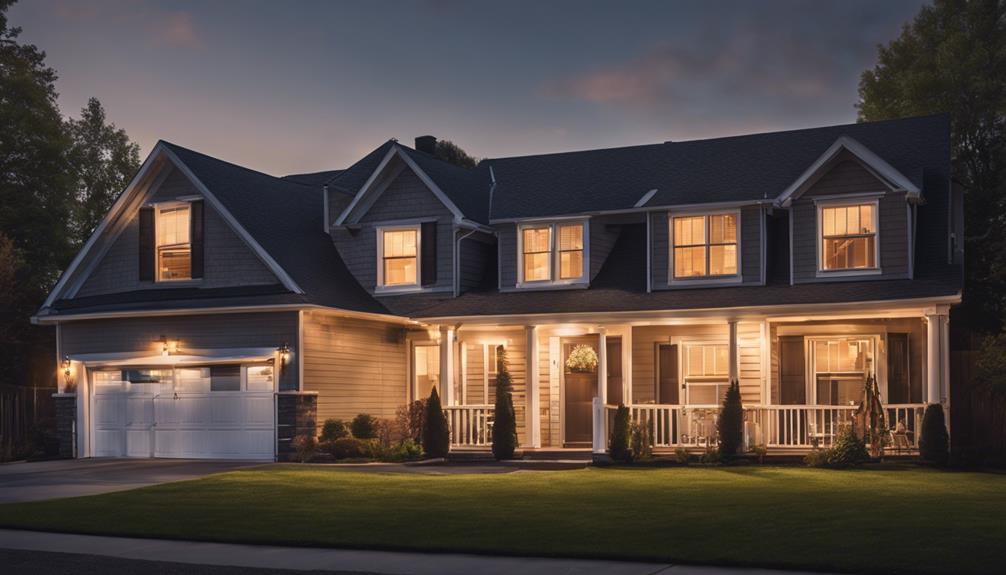
To fortify your home against break-ins, a locksmith emphasizes the critical role of high-quality locks and advanced security systems. The benefits of deadbolt locks, smart locks, and security cameras cannot be overstated, as they greatly enhance your home’s defense. Additionally, regular lock maintenance and upgrades, along with effective window and sliding door security, are essential strategies to thwart potential intruders.
Importance of high-quality locks and security systems
Consistently investing in high-quality locks and advanced security systems is essential for greatly reducing the risk of home break-ins. Given that 34% of burglars enter through the front door, robust locks act as a formidable barrier, deterring unauthorized entry. Additionally, homes without security systems are 300% more likely to be targeted. This statistic underscores the critical role these systems play in safeguarding your home. Strategically placed deadbolts and smart locks fortify vulnerable entry points, such as first-floor windows, thereby enhancing overall security. Complementary measures like outdoor lighting and neighborhood watch programs further bolster these defenses. By securing valuables out of sight, homeowners can make their properties significantly less appealing to potential intruders, maintaining control over their safety.
Benefits of deadbolt locks, smart locks, and security cameras
Building on the foundation of high-quality locks and robust security systems, homeowners can further enhance their protection by incorporating deadbolt locks, smart locks, and security cameras, each offering unique benefits that greatly reduce the risk of break-ins. Deadbolt locks, recommended by locksmiths for their strength, add an extra layer of security, making forced entry much more challenging. Smart locks provide unparalleled convenience and control, enabling remote access and real-time monitoring of entry points, seamlessly integrating with smart home systems. Security cameras serve as a powerful deterrent, their visible presence discouraging potential burglars while capturing essential surveillance footage for investigations. Together, these elements create a formidable defense, enhancing both security and peace of mind for homeowners.
Importance of regular lock maintenance and upgrades
Regular lock maintenance and timely upgrades are important strategies in fortifying your home against potential break-ins, greatly reducing vulnerabilities that burglars often exploit. Given that 34% of intruders enter through the front door, regularly inspecting and maintaining your locks is essential. Upgrading to high-security locks, such as anti-snap cylinders, can deter forced entry attempts, which constitute 75% of break-ins. Impact-resistant locks on all doors and windows are necessary, as 56% of unauthorized entries occur through these points. Additionally, ensuring that all entry points are secured with quality locks is crucial, considering that 62% of burglaries happen during daytime hours. Proactive lock maintenance and upgrades provide a robust defense, giving you greater control over your home’s security.
How to secure windows and sliding doors effectively
Securing windows and sliding doors effectively involves a combination of high-quality locks, physical barriers, and regular maintenance to create a formidable defense against potential intruders. Install window locks or security bars to prevent easy access. Reinforce windows with shatterproof glass or window films to withstand break-in attempts. For sliding doors, use security bars or dowels to thwart forced entry, and upgrade to high-security locks and deadbolts for enhanced protection. Regularly inspect and maintain all windows and sliding doors to make sure they remain in peak working condition. These proactive measures provide an impenetrable layer of security, empowering homeowners with greater control over their property’s safety. By investing in robust security solutions, you can significantly decrease the risk of home break-ins.
Advanced Security Measures
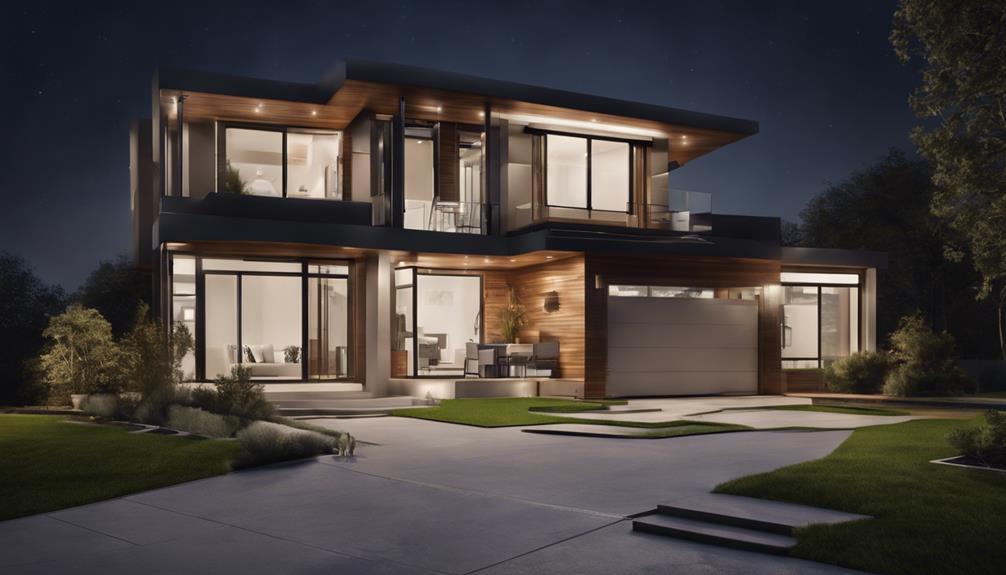
Embracing advanced security measures, such as biometric locks, alarm systems with professional monitoring, and integrated home automation, can greatly enhance the protection of your home. Biometric locks offer a strong defense by utilizing unique identifiers like fingerprints, while alarm systems provide immediate alerts and continuous surveillance through professional services. Additionally, the seamless integration of these systems with smart home devices guarantees thorough control and adaptability, allowing homeowners to tailor their security setup to evolving needs.
Biometric locks and their effectiveness
Biometric locks, leveraging unique biological characteristics like fingerprints and iris scans, represent a cutting-edge advancement in access control technology. Offering thorough security, these systems eliminate the need for physical keys or codes, which can be lost or stolen. The accuracy is impressive, with false acceptance rates as low as 1 in 100,000, making unauthorized access extremely challenging. Additionally, biometric locks are resistant to traditional lock picking techniques, providing an extra layer of protection. Advanced models can seamlessly integrate with smart home security systems, enabling thorough and cohesive security management. For those seeking ultimate control over home security, biometric locks offer a reliable, high-tech solution that greatly reduces the risk of break-ins.
Alarm systems and professional monitoring services
Investing in alarm systems and professional monitoring services is a strategic move that greatly enhances home security by providing round-the-clock surveillance and immediate response to potential threats. Alarm systems deter 60% of burglars, offering a significant preventive measure. Remarkably, only 34% of people own these systems, despite their proven effectiveness in reducing break-ins. Professional monitoring services guarantee 24/7 vigilance, with monthly fees ranging from $20 to $60, ensuring prompt action when alarms are triggered. Professional installation guarantees ideal placement and connectivity of devices. Additionally, the presence of monitored security systems can lead to insurance discounts, helping offset initial costs. Such measures not only protect your property but also offer peace of mind, reflecting a controlled, proactive approach to home security.
Home automation and integration with security systems
Building on the foundational security provided by alarm systems and professional monitoring services, home automation and integration with security systems offer an advanced layer of protection that revolutionizes the way homeowners safeguard their properties. Centralized control over security systems, lighting, thermostats, and smart locks empowers homeowners with unprecedented oversight and convenience. Integration enables remote monitoring and control via security apps, ensuring real-time responsiveness. Customizable smart security systems, incorporating cameras, sensors, and other devices, provide tailored security solutions adaptable to individual needs. Smart locks, with remote access and monitoring capabilities, further enhance entry control. This synergy between advanced technology and security fosters a proactive approach, giving homeowners the control and flexibility to protect their homes efficiently and effectively.
DIY Home Security Improvements
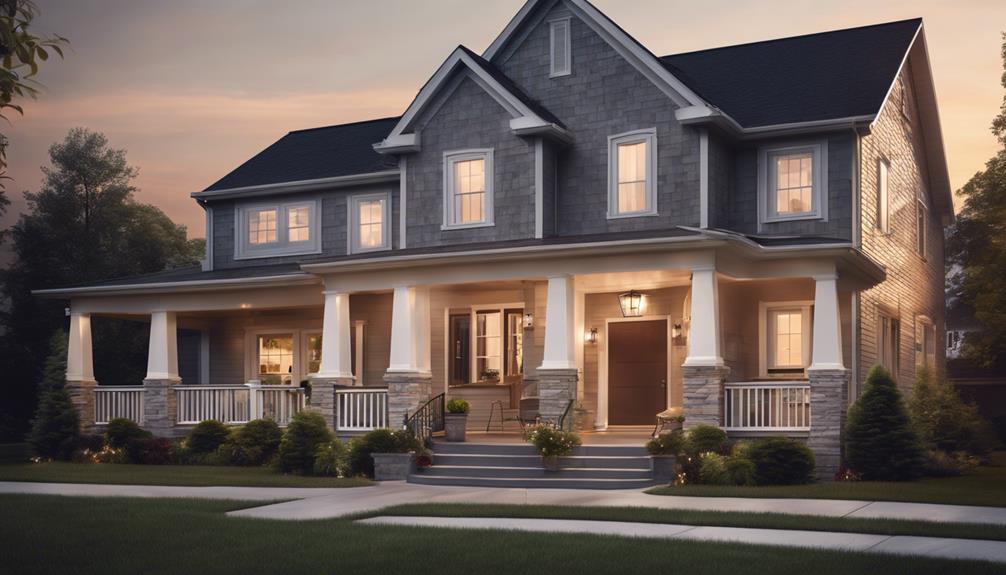
Exploring DIY home security improvements presents an exciting opportunity to enhance safety without breaking the bank. Simple yet effective measures, such as installing impact-resistant doors, optimizing outdoor lighting, and organizing neighborhood watch programs, can greatly deter potential intruders. These practical steps not only fortify your home but also foster a sense of community vigilance and shared responsibility.
Affordable security upgrades homeowners can do themselves
Many homeowners may be surprised to learn that implementing a few cost-effective, do-it-yourself security upgrades can greatly enhance the safety of their homes. Installing window sensors is a crucial measure, especially since 23% of burglars break in through first-floor windows. Upgrading to smart door locks can greatly bolster security, given that 34% of intruders use the front door. Motion sensor lights around entry points act as a deterrent, addressing the 56% of break-ins that involve forced entry. For real-time monitoring, setting up a video doorbell is essential, particularly since 60% of burglaries occur while residents are home. Additionally, DIY security cameras are essential for identifying perpetrators, aiding in solving the mere 13% of reported burglaries.
Importance of landscaping and outdoor lighting in deterring burglars
In addition to implementing affordable security upgrades inside the home, enhancing your landscaping and outdoor lighting can play a pivotal role in deterring burglars by reducing hiding spots and increasing visibility. Well-maintained landscaping, with trimmed shrubs and clear sightlines, diminishes potential hiding places for intruders. Outdoor lighting equipped with motion sensors or timers illuminates dark areas, discouraging unauthorized approach. Strategic placement of lights near entry points like doors and windows further increases security by enhancing visibility. Pathway and landscape lighting make it difficult for burglars to approach unnoticed. Utilizing bright, energy-efficient LED lights in key areas not only creates a safer environment but also makes your home less appealing to potential burglars, ensuring peace of mind.
How to create a neighborhood watch program
Creating a successful neighborhood watch program requires careful planning, active community engagement, and strong collaboration with local law enforcement to foster a safer environment for all residents. Start by organizing a community meeting to gauge interest and gather volunteers. Utilize initiatives like ‘National Night Out‘ to boost involvement and awareness. Establish clear communication channels, such as social media groups or email lists, to keep everyone informed. Encourage residents to report suspicious activities promptly to law enforcement. Regular meetings and training sessions with police will enhance vigilance and responsiveness. By fostering a sense of community and mutual support, neighborhood watch programs can effectively reduce crime by 16-26%, creating a secure and cohesive neighborhood.
Case Studies: Successful Home Security Strategies
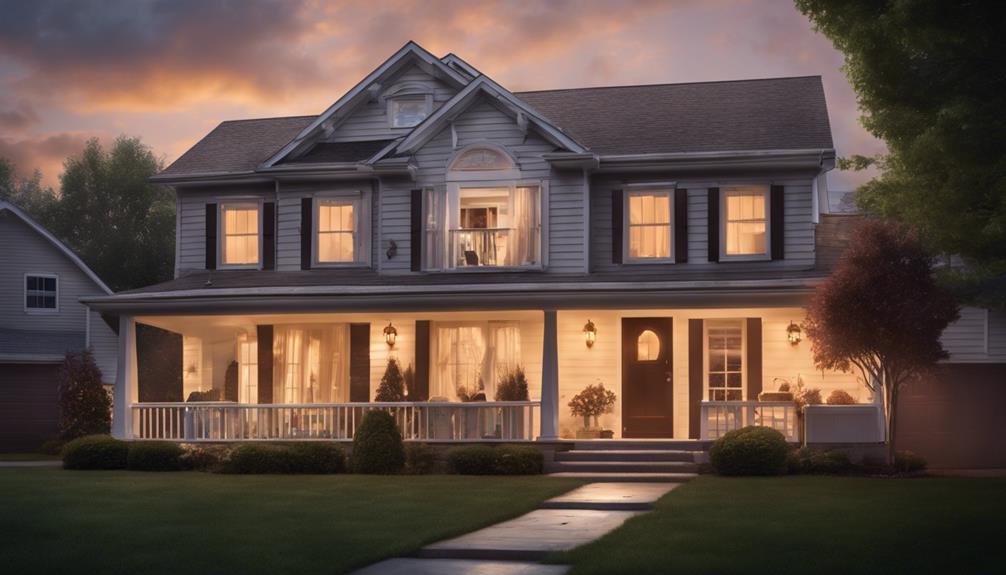
Examining real-life examples of homes that have successfully thwarted break-ins, we can uncover valuable lessons and best practices to enhance our own security measures. These case studies highlight the effectiveness of various strategies such as thorough security systems, smart home integration, and community involvement. By understanding these proven methods, we can better protect our homes and foster safer neighborhoods.
Real-life examples of homes that successfully thwarted break-ins
Dramatic reductions in burglary attempts can be achieved through strategic home security measures, as illustrated by compelling case studies from California to New York. A California home saw a 66% decrease in burglary attempts by using visible security cameras and motion-activated lights. In Texas, reinforced doors and windows cut forced entry risks by over 50%. Meanwhile, a New York family experienced a 60% drop in incidents with a thorough security system. Florida residents, through a neighborhood watch program, prevented break-ins by 40% with enhanced vigilance. In Arizona, smart home integration allowed a homeowner to remotely control locks and cameras, resulting in a 70% reduction in burglary attempts. These examples underscore the power of proactive security measures.
Lessons learned and best practices
Building on the success stories of thwarted break-ins, homeowners can implement several proven strategies to enhance their security and protect their families. Installing a complete home security system can reduce the risk of break-ins by 300%, serving as a robust deterrent. Securing entry points, especially front doors, which account for 34% of break-ins, is essential. Additionally, fortifying homes with outdoor lighting greatly reduces the likelihood of being targeted. Given that over 60% of burglaries occur while residents are at home, maintaining vigilance is essential. These measures not only protect property but also mitigate the long-lasting emotional trauma experienced by victims. By adopting these best practices, homeowners can take proactive control of their security and peace of mind.
Locksmith Services: How Low Rate Locksmith Can Help
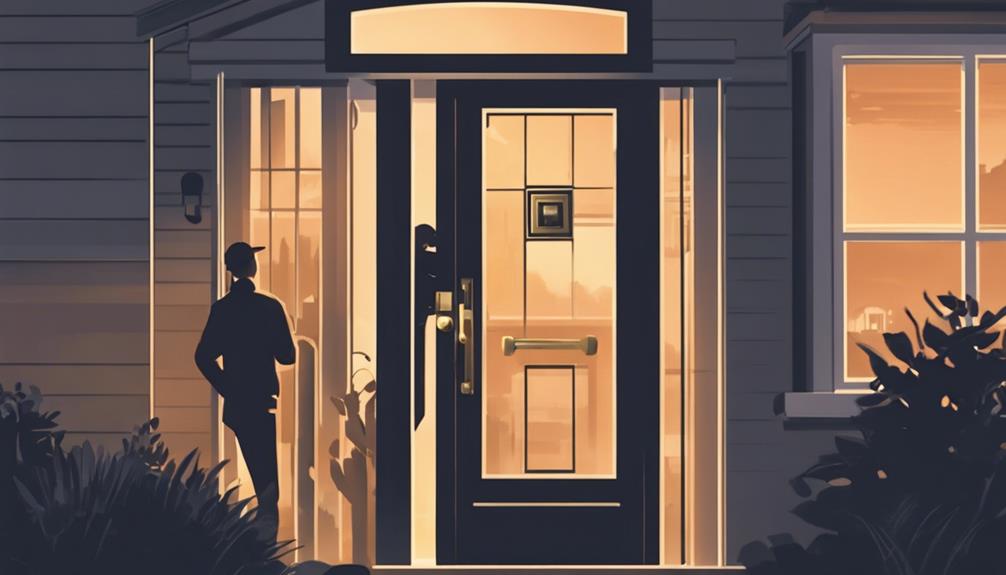
Low Rate Locksmith offers extensive residential services that are essential for enhancing home security, especially in the aftermath of a break-in. Their 24/7 emergency response, expert lock rekeying, and thorough repair services guarantee that your property is promptly secured and vulnerabilities are effectively addressed. By utilizing professional locksmith services, homeowners can achieve a heightened sense of safety and peace of mind, knowing that their security is in expert hands.
Overview of residential locksmith services offered by Low Rate Locksmith
Homeowners seeking thorough and dependable security solutions will find an array of residential locksmith services offered by Low Rate Locksmith, ranging from emergency lockout assistance to advanced security system upgrades. Their extensive offerings include lock rekeying, installation, and key duplication to guarantee homeowners maintain control over access. Specializing in repairing and replacing damaged or malfunctioning locks, Low Rate Locksmith enhances home security with precision and expertise. They provide professional advice on upgrading home security systems, incorporating high-quality locks and keyless entry options for modernized protection. With a steadfast commitment to customer satisfaction, Low Rate Locksmith ensures prompt, reliable service, giving homeowners peace of mind and robust security solutions tailored to their unique needs.
Importance of professional lock installation and maintenance
Expert lock installation and meticulous maintenance play a pivotal role in fortifying home security, greatly reducing the risk of break-ins and ensuring peace of mind for residents. Professional installation by Low Rate Locksmith guarantees that entry points are secured, greatly diminishing the 34% of burglaries occurring through front doors. Additionally, well-maintained locks are indispensable, as 56% of burglaries involve forced door entry. Low Rate Locksmith’s regular maintenance services prevent lock malfunctions, which could otherwise compromise security. Their expertise ensures that locks function at their best, thereby deterring potential intruders and safeguarding homes. By investing in professional lock services, homeowners gain control over their security, creating a robust barrier against unauthorized access.
Emergency services and how they can provide peace of mind
In addition to professional lock installation and maintenance, the availability of 24/7 emergency locksmith services greatly enhances home security, providing immediate assistance and peace of mind in critical situations. Low Rate Locksmith excels in offering swift, reliable support during home break-ins, ensuring entry points are rapidly secured through lock replacements and rekeying. Their rapid response times are pivotal in mitigating further risk and restoring safety to your home. With affordable rates and dependable services, Low Rate Locksmith stands out as a trusted partner in fortifying home defenses. Leveraging their expertise not only enhances your security measures but also instills a profound sense of safety and control, essential for peace of mind during distressing events.
Conclusion

To sum up, grasping the statistics behind home break-ins is crucial for improving your security measures. By concentrating on key areas such as securing entry points, utilizing advanced security systems, and staying vigilant during peak hours, you can greatly diminish the risk of unauthorized access. We urge you to take proactive steps and consult professional locksmith services to fortify your home’s defenses effectively.
Recap of the importance of understanding break-in statistics
Understanding the importance of break-in statistics is essential for homeowners aiming to strengthen their security measures and safeguard their properties effectively. Break-in statistics reveal critical insights into the frequency, timing, and common entry points of burglaries, enabling homeowners to assess their security risks more accurately. This knowledge empowers individuals to make well-informed decisions about implementing home security systems and measures. By analyzing data trends and patterns, homeowners can tailor their security strategies to address specific vulnerabilities and deter potential intruders. Awareness of these statistics fosters a proactive approach, ensuring that homes are fortified against threats. Ultimately, understanding break-in statistics not only enhances security but also provides peace of mind by reducing the likelihood of becoming a victim of burglary.
Final tips for improving home security
Equipped with a solid understanding of break-in statistics, homeowners can now implement several effective strategies to enhance their home security and minimize the risk of becoming a target. Installing a home security system is vital, as it reduces the likelihood of a break-in by 300%. Utilizing outdoor lighting can deter intruders, making a well-lit home less attractive. Securing all entry points, particularly front doors and first-floor windows, with high-quality locks is essential. Additionally, joining neighborhood watch programs can boost community vigilance. Finally, keeping valuables out of sight ensures that your home remains less enticing to potential burglars. By adopting these measures, homeowners can significantly strengthen their defenses against potential break-ins.
Encouragement to take proactive steps and consult professional locksmith services
Considering the alarming frequency of home break-ins, taking proactive steps to bolster your home security, including consulting professional locksmith services, is imperative for safeguarding your property and ensuring peace of mind. Home break-ins occur every 13 seconds in the U.S., making immediate action essential. Installing a home security system can reduce the likelihood of a break-in by 300%, while quality locks on all entry points, especially front doors, are vital defenses. With over 60% of burglaries happening while residents are at home, enhanced security measures are indispensable. Professional locksmith services offer expertise in securing entry points, ensuring your home is a formidable barrier against intruders. Take control of your security and consult experts today for thorough protection.
Frequently Asked Questions
What Are the Most Effective Deterrents for Home Break-Ins?
The most effective deterrents for home break-ins include security alarms, which deter 60% of burglars, and visible security cameras, discouraging 66% of potential intruders. Additionally, turning on interior lights can make 60% of burglars reconsider targeting a home. Utilizing advanced security systems, such as those offered by EMC Security, and incorporating home automation features greatly enhance overall protection, providing homeowners with greater control and peace of mind.
Are Smart Home Security Systems Worth the Investment?
Smart home security systems are unequivocally worth the investment. They not only reduce the risk of burglary by up to 300% but also integrate seamlessly with other smart home devices, offering enhanced protection and convenience. Considering homeowners without security systems are 75% more likely to experience a break-in and the average loss per invasion is around $2,000, the financial and peace-of-mind benefits are substantial and compelling.
How Often Should I Update My Home Security Measures?
Home security measures should be updated every 3-5 years to stay ahead of evolving burglary tactics and technological advancements. Regular updates to door locks, surveillance cameras, and alarm systems guarantee maximum effectiveness. Incorporating smart technology can further enhance protection and customization options, empowering homeowners with greater control. Periodic assessments and upgrades are essential for maintaining a secure and safe living environment, ensuring peace of mind and reliable security.
What Should I Do Immediately After a Break-In?
Immediately after a break-in, promptly call 911 to report the incident. Refrain from touching anything to preserve evidence and wait for law enforcement to arrive. Document any damages or stolen items for police and insurance purposes. Contact your home security provider to review footage or alarm logs for additional information. Finally, consider seeking emotional support from friends, family, or counseling services to navigate the aftermath effectively.
Can Outdoor Lighting Really Help Prevent Burglaries?
Certainly, outdoor lighting can greatly help prevent burglaries. Research from the Bureau of Justice Statistics indicates that it reduces break-in risks by up to 39%. Well-lit homes are three times less likely to be targeted, as per the U.S. Department of Justice. Motion-activated lights are particularly effective, deterring 83% of potential burglars. Strategically placed lighting near entry points further enhances security and offers homeowners greater control and peace of mind.

